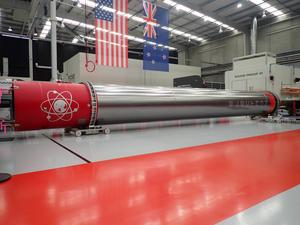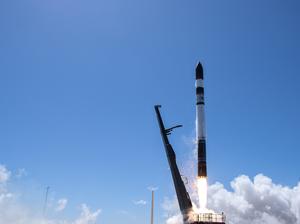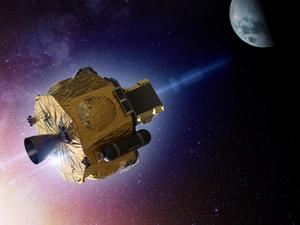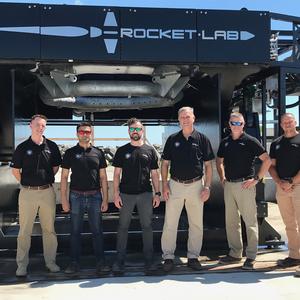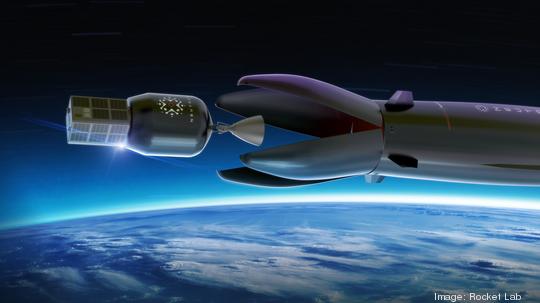
With an eye toward satellite deployment, human spaceflight and beyond, Rocket Lab USA Inc. on Thursday unveiled details about the bigger, reusable Neutron rocket it’s working on.
In a slick video presentation that streamed early this morning on YouTube, founder and CEO Peter Beck described and demonstrated the design, materials, propulsion and reusability features of the aerospace company’s next-generation launch vehicle.
Neutron is an advanced eight-ton payload class launch vehicle designed to deliver reliable and cost-effective launch services for satellite mega-constellations, deep space missions and human spaceflight.
Based in Long Beach, California, with launch operations on Māhia Peninsula in New Zealand, Rocket Lab said it is scoping the East Coast of the U.S. for its new rocket program.
Neutron is “a new breed of rocket, wherein reliability, reusability and cost is hard-baked into the design from day one,” Beck said in the video update. “This is not a conventional rocket. This is what a rocket should look like in 2050. But we're building it today.”
The company’s current workhorse is the Electron, which is the second most frequently launched U.S. rocket behind the Falcon 9 at SpaceX. The Electron provides dedicated delivery to orbit for small satellites of up to 300 kilograms, or 660 pounds.
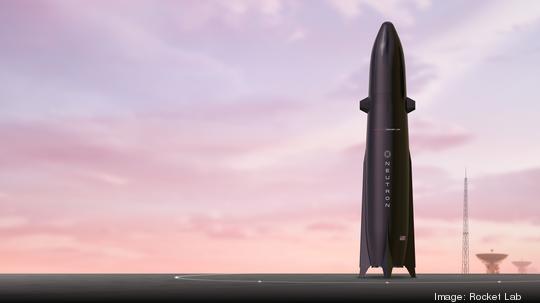
The medium-lift Neutron “is an absolute beast,” Beck said — a two-stage rocket that stands 40 meters (131 feet) tall with a 7-meter (23-foot) diameter at the base 5-meter (16.4-foot) diameter fairing. The launch vehicle promises a lift capacity of up to 8,000 kilograms (17,600 pounds) to low-Earth orbit and 15,000 kg (33,000 pounds) to low-Earth orbit. The vehicle itself weights 480,000 kg (a million pounds).
By comparison, the specs for SpaceX’s Falcon 9 rocket list 22,800 kg, or about 50,000 pounds, to low-Earth orbit, and the Terran R from 3D-printed rocket maker Relativity Space is slated to deliver more than 20,000 kg, or 44,000 pounds, to low-Earth orbit.
Design
Rocket Lab (Nasdaq: RKLB) said that reusability — the ability to launch, land and lift off again — is baked into Neutron’s design from bottom to top.
What Beck described as “a nice big wide static base” eliminates the need for both landing legs and launch site infrastructure including strongbacks and launch towers, enabling Neutron to stand on its own at liftoff. Then after the rocket reaches space and deploys its second stage, the first stage will return to Earth at the launch site, eliminating high-cost ocean-based landing platforms and operations.
Meanwhile, the upper stage has to be both light and high-performing but also low-cost because for now it’s disposable. With Neutron, the second stage is no longer part of the rocket’s exterior structure but housed inside the first stage and fairing.
“Neutron’s upper stage is actually hung from the payload separation plane, which makes it incredibly strong,” Beck said. “It also makes it the lightest upper stage ever in history.”
And Neutron tapers toward the top because “reusability and reentry is not actually a structural problem — it's a thermal problem,” Beck said. “The best way to manage a thermal load is to just not have it.”
Materials
As much as Beck does “love the sleek black look of carbon,” the carbon composite that Neutron is made of is “about far more than looks.”
Lightweight, strong and able to withstand the immense heat and forces of launch and reentry again and again, the material is also manufactured with an automated fiber placement system that measures speed of creation in “meters per minute,” Beck said.
“A huge reduction in weight is a game changer,” Beck said. “If you can take the mass out of the rocket, you take the pain out of propulsion, and quite literally the heavy lifting.”
Engines
Doing that lifting for Neutron will be Rocket Lab’s newest engine, Archimedes — a reusable liquid oxygen/methane gas generator cycle engine capable of 1 meganewton thrust and 320 seconds of ISP.
Seven Archimedes engines will power Neutron’s first stage, with one vacuum-optimized engine on the second stage. But with the lightweight carbon composite structure, Archimedes won’t have to work as hard.
“There is no point in having an engine that is absolutely busting its bolts at 11,000 psi,” Beck said. “What we need for a reusable launch vehicle is an engine that can run over and over again, at very low stress and very high margins.”
‘Hungry Hippo’ fairings
An especially unique feature of Rocket Lab’s new rocket is its “Hungry Hippo” fairing design, which fixes the nose cone to the first stage.
“We asked ourselves, how can we reuse as much as possible to really drive down those costs and time to get it onto the pad and launch again and again?” Beck said. “The answer is not throwing away the fairings or even trying to catch them. The best way is to never get rid of them in the first place.”
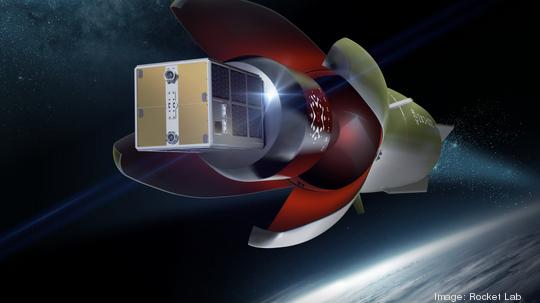
Rather than separating and falling into the ocean as traditional fairings do, Neutron’s fairing jaws will open wide — as in the classic tabletop game — to release the second stage and payload, then close to return to Earth with the first stage.
“What lands back on Earth is a complete first stage, fairings and all,” Beck said. “And all we need to do is open those fairings back up, load in the second stage and a payload, close the fairings and go again.”
Rocket Lab said it is currently working through a competitive process to select a launch site, rocket production facility and Archimedes engine test facility on the U.S. East Coast that would create around 250 new jobs.
“The team is flat out right now at full force developing [Neutron],” Beck said. “Prototype tanks are under manufacture as we speak. And Archimedes will breathe its first fire next year.
“Because at Rocket Lab when we say we're going to do something we do it.”
Watch the full update here:
